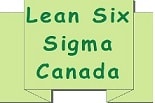Heijunka, also known as production smoothing or leveling, is a Toyota Production System technique of reducing the unevenness (mura).
Most value streams produce a variety of products; therefore they face a choice of production mix and sequence. To prevent fluctuations in production, Toyota developed Heijunka and levels production by assembling a mix of models as part of each batch. This way, they level the production by volume, as well as by product type or mix and reduce the batch size as much as possible.

Once production level is more or less the same or constant for a month, you will be able to apply pull systems, and balance the assembly line.
If customers orders are not predictable, you may be building huge quantities one week, paying overtime, and stressing your people and equipment. Then, the following week, if orders are light, your people and equipment will be underutilized.
Toyota experts concluded that you can provide better service and better quality by leveling out the production schedule and not always building to orders.
When implementing Lean, focusing on Muda is the most common approach, as it is somehow easy to identify and eliminate waste in your processes.
Essentially by implementing Heijunka, you want to eliminate Mura, unevenness due to irregular production schedule or fluctuating production volumes due to internal problems like downtime, missing parts or defects. In turn, this will help to reduce or eliminate Muda (non-value added defined by the eight types of wastes) and Muri (overburden of people and equipment).
How does it work? You will need to take the actual demand, determine the pattern of volume and mix and build a level schedule every day. Therefore, you do not build products according to the actual flow of customer order. You will take the total volume of orders in a period and level them out, so the same amount of mix is being made each day.
Keep in mind that for Heijunka to be successful you need to have already implemented Quick Changeover (QCO), Standardized Work and Error Proofing. For QCO, the best would be to have flexible tooling that can be used interchangeable. Therefore, you will need to perform time studies on setup and changeover and try as much as possible to switch the internal changeover to external changeover. Involve operators as much as possible, making sure that you have the resources and support needed ready for changeover.
Toyota Production Systems (TPS) experts recommend to keep a small buffer and safety stocks. They suggest that a manufacturer hold some finished goods inventory and build at a leveled pace to replenish what the customer takes away in a pull system. You will need to look for a smaller number of part numbers that are big in demand, and build them when you have fewer real orders, and then keep those in inventory.
Benefits of leveling the schedule:
Reduced risk of unsold goods
Balanced use of labour and equipment
Smoothed demand on upstream processes and your suppliers
Flexibility to make what the customer wants, when they want it, resulting in reduced inventory
Watch this short LEGO Lab Heijunka / Kanban video from Tiger Motors.
